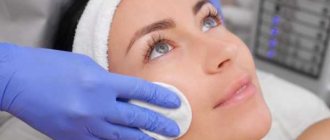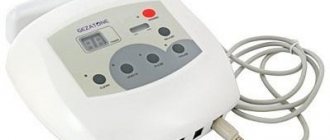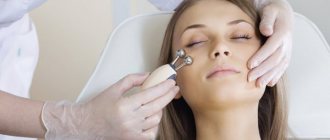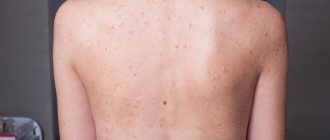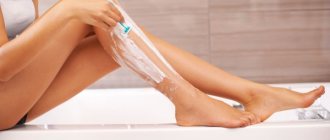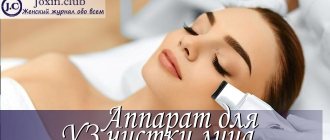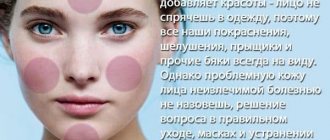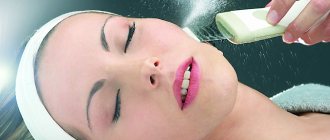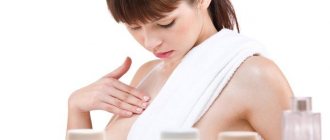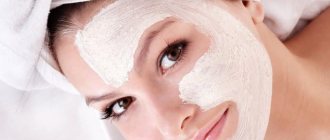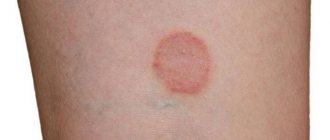Consequences
Facial cleansing has a number of consequences that go away quite quickly if you properly care for your skin:
- Redness.
- Pimples.
- Inflamed formations.
- Peeling.
- Swelling.
If the procedure is carried out incorrectly, small scars and other irregularities may appear, infection may enter the body, and general health may deteriorate.
How to remove redness?
A reminder on how to avoid redness:
- Carry out deep cleansing of the skin of the face exclusively in beauty salons and centers, as there are the most suitable conditions for such a procedure.
- Choose a qualified and experienced cosmetologist whom you can safely entrust your face to.
- Make sure that after the procedure the cosmetologist makes a mask for your face, since it is this that soothes the dermis and narrows enlarged pores.
How to wipe off redness?
Redness usually goes away within 2 days after the procedure. However, what if this does not happen? Remedies to eliminate redness:
- Facial gel with aloe vera extract.
- Chamomile decoction (can be used both in liquid and frozen form).
- Lactic acid (can be replaced with curdled milk, which has recently curdled).
- Green tea.
You can also use anti-inflammatory compresses and masks based on medicinal plants, which will help quickly eliminate unwanted redness.
What to do if acne appears?
Almost everyone, after cleansing their face, experiences the appearance of acne, which most often appears due to deep cleansing of the pores. You can quickly eliminate them in the following ways:
- Wash your face with a herbal decoction (chamomile, calendula or sage) to eliminate the inflammatory process, soothe the skin and destroy dangerous microorganisms.
- You can wipe off unwanted pimples with salicylic acid, which can be purchased at any pharmacy.
- Make clay masks to normalize sebum secretion.
- Do not squeeze out the formation under any circumstances, otherwise you can introduce an infection into the dermis or leave scars on your face.
If the situation does not improve, then you should immediately contact your cosmetologist, who will find out the cause of the rash and find an effective way to eliminate it.
Care masks
After cleansing your face, many cosmetologists recommend making soothing masks at home to quickly restore the skin.
Recommendations
- You should not use all mask recipes in a row; it is recommended to use only those prepared on the basis of medicinal, in particular antiseptic, drugs.
- Ask your cosmetologist which mask is best to perform at home after cleansing your face.
- Before applying the mask, perform an allergic reaction test on a small area of the skin on your hands.
- If the consequences after cleansing are minor, use fruit or vegetable based masks.
- You can perform such restorative face masks only once every 3 days.
Recipes
- Mix a little blue clay, potato-based starch and talcum powder in equal proportions. At the same time, grind aspirin and chloramphenicol into powder (half a tablet each), add alum with the tip of a knife. Pour the dry mixture with a previously prepared decoction based on the string and stir thoroughly, after which the mask is ready.
- Combine white clay and talc (thirty grams each), chloramphenicol powder (fifteen grams) into one mass, then add 3% peroxide.
- Combine melted honey (thirty milliliters) with pre-chopped oatmeal (fifteen grams), after which the mass can be applied to the skin of the face.
Add chopped parsley (thirty grams) to 33% fat cream or sour cream (thirty grams). Apply the finished product to the surface of your face. Grate raw potatoes (fifteen grams) and add regular high-fat yoghurt to it until a puree-like consistency appears, after which the mask is ready for application. In yogurt, dilute yeast (ten grams) to a consistency reminiscent of sour cream, then add freshly squeezed strawberry juice (ten milliliters). Dilute Dimexide (five grams) in clean water (fifty milliliters) and wipe your face with this emulsion. After 30 minutes, apply Solcoseryl ointment to the surface of the face.
Such masks will allow you to quickly soothe your facial skin after cleansing, as well as eliminate unwanted redness, pimples and other effects of peeling.
How to take care of your face if acne appears after cleansing?
The procedure can be performed manually or using ultrasound. Therefore, the causes of acne can be very different.
With mechanical
Manual or mechanical cleaning is squeezing out the contents of clogged pores manually or using special tools. In this case, several factors can lead to the appearance of acne:
- inflammation as a response to intervention;
- insufficient sterility during the procedure itself (remnants of makeup on the face, untreated hands and cosmetologist’s instruments);
- neglect of some stages of mechanical cleaning, for example, steaming or applying a mask that closes the pores;
- the presence of deep inflammations that were not seen by a specialist, and for which manual cleaning is contraindicated;
- exposure to the external environment immediately after the procedure (street dust, car exhaust fumes, heat causing sweating, ultraviolet rays);
- Neglect of contraindications, for example, performing cleaning on critical days, during exacerbation of herpes or other infection;
- improper care after the procedure, too early use of foundation, etc.
With ultrasonic
Skin cleansing using targeted ultrasound is a more gentle procedure. But some of the factors that cause acne after mechanical manipulation are also at work here. This is a violation of sterility during cleaning, ignoring the rules of skin care after it, carrying out it contrary to contraindications, an aggressive environment. There are other reasons why acne occurs:
- Ultrasound intolerance. For some, rashes appear as an allergic skin reaction to it.
- Presence of undetected, deeply located pimples. Ultrasound acts like a massage on them. This causes inflammation to expand the area of presence, going outside.
- Insufficient cleansing of pores from their contents. This happens if combined cleaning is required, but only ultrasonic cleaning is performed. The remaining sebum provokes an inflammatory process, and acne forms.
Types of skin cleansing:
- manual or mechanical;
- cleansing using vacuum, ultrasound;
- peeling;
- masks.
Typically occurs in a beauty salon. To carry out the procedure, you need to cleanse the skin to open the pores. Makeup must be washed off and the face wiped with a cleanser. Then the skin is steamed. But if there are contraindications, then warming creams are used.
Now you can begin the cleaning itself. The cosmetologist uses a special tool to remove dead skin cells and fat from the face in a short time. Then a not very pleasant action is carried out - liquid is drawn out of the pores. If they do not have time to complete this procedure in twenty minutes, they close.
After cleansing your face, you need to relieve tension from the skin. To do this, use an infrared lamp or clay masks. You can massage your face a little. It is not advisable to wash your face for the first twelve hours. Wipe your face with disinfectants for three days. Swimming in the river and sunbathing is contraindicated to prevent acne and age spots from appearing.
The session takes only 45 minutes. Prices range from $15 to $40.
For this purpose, an ultrasonic scrubber is used. It affects the subcutaneous layer and is capable of micromassaging tissue. This procedure does not cause injury and even slightly smoothes out facial wrinkles.
First, remove makeup and dirt. Then the ultrasound cleansing session begins. The device removes the surface layer of keratinized skin, removing all impurities from it. After ultrasonic facial cleansing, the skin looks rejuvenated and fresh. Fat content is reduced. The session lasts 15 minutes. Its cost is up to thirty dollars.
Vacuum cleaning
For cleaning, a tube-shaped instrument is used. It sucks out all impurities from the pores. The procedure does not cause any discomfort. It is recommended to do it for acne, but if there is no inflammation.
The cleaning itself is carried out using a suction cup with minus pressure. It works on the principle of sucking out all impurities from the pores. At certain intervals the device is disinfected. It is even carried out on the shoulders and décolleté. When areas of the skin are heavily contaminated, the vacuum will not cope. Therefore, you will have to use manual cleaning.
At the end of the session, we narrow the pores again, which means special care is required. After cleansing the face with a vacuum, moisturizing masks or cryomassage are used. This cleansing should not be done on delicate skin, with dermatoses, or acne. The session lasts twenty minutes and costs ten dollars.
This is the action of an electrical discharge of low strength and low voltage. It melts fat deposits, removes dirt and pimples. All contaminants appear on the surface, where the cosmetologist removes them. With this cleansing, blood vessels are strengthened, the skin is toned and slightly dried. This cleaning should not be done frequently because the opposite effect may occur. Since current is used, people with pacemakers cannot undergo the procedure.
Peeling
It is carried out after cleansing the face using manual means or using devices. It remodels the face and removes dead skin cells, especially when the skin is peeling. It is then cleaned with acids. This treatment improves facial skin and helps remove shallow impurities. But redness of delicate skin may occur.
Cleansing with masks
If the skin is inflamed, then the types of cleansing described above will not work. Here you need to use masks. You can prepare them yourself or buy them ready-made. For oily skin, kefir masks are suitable; if it is dry and flaky, then you can use sour cream. And salted cabbage is suitable for everyone. Such masks should be applied for about twenty minutes.
Curd masks are used as gommage. A small amount is enough. After 10 minutes, wipe off.
If you take ready-made masks, it is better to use them in the form of a film. But even here, before applying a mask to your face, you need to clean it and wash off your makeup. There are many options for masks for different skin types.
Such cleansing and peelings are good because after them the effect of various cosmetic procedures will be stronger. The skill of the specialist also plays an important role.
You can cleanse your skin once a week or once a month. Skin that is heavily contaminated, clogs in the pores, and acne largely depend on a person’s lifestyle, his diet and how he cares for his facial skin.
If you don’t make changes in your life, for example, start playing sports, being outdoors more often, eating right, then facial care and various cleansing will only give a temporary and short-lived effect.
Home care after the cleansing procedure directly depends on the type of rash. If pimples from the potentially dangerous category appear on your face, you should urgently consult a dermatologist to prescribe treatment (often medicinal).
Until you speak with a doctor, you must refrain from using any cosmetics (both decorative and caring). It is allowed to wash your face with chamomile decoction. If you feel a strong burning and itching, you can apply ice cubes from calendula decoction to your face.
So-called “safe” pimples can be treated with more aggressive means. Preparations based on salicylic acid (Akriderm, Dalatsin) or containing benzoyl peroxide (Baziron, Ugresol) are suitable.
Combining salicylic acid and benzoyl peroxide is very dangerous, because burns may appear at the site of acne. The above preparations are available in the form of gels, so you don’t have to worry about the fact that only cleaned pores will become clogged again.
For daily skin care after cleansing, it is recommended to choose products containing antioxidants, vitamin C and retinol. These beneficial ingredients help smooth the surface of the face, quickly eliminate red marks and protect the skin from negative environmental influences.
We invite you to familiarize yourself with Chlamydia after treatment: tests and reasons for treatment failures. When to take control tests after treatment for chlamydia. What symptoms may remain after treatment for chlamydia.
In order to support the body from the inside, you can consume ascorbic acid and Aevit vitamins. Such drugs will accelerate the regeneration process at the cellular level.
Even if your face does not look perfect after cleaning, you should not refuse the procedure in the future. The main thing is to find a truly qualified specialist and adhere to the basic rules of skin care for at least a week after visiting a cosmetology salon. But it is better to clean pores at home only if no complications have previously appeared.
Before understanding the side effects of the procedure, you need to know what it is and what set of measures it includes. The salon can offer you hardware cleaning and mechanical cleaning.
Hardware – involves the use of special equipment: laser, ultrasound, vacuum. Laser cosmetology radically eliminates wrinkles, acne and rashes, but at the same time it is a rather painful process and has a long rehabilitation period.
An ultrasound session is an ambulance for rosacea and acne; it has virtually no contraindications and does not require a recovery period, since it does not injure the face.
The vacuum method cleanses pores very deeply, does not cause redness or peeling, and serves to prevent the appearance of facial wrinkles.
Mechanical – most effective in the fight for smooth and elastic skin without acne, comedones, and blackheads. In this case, the cosmetologist uses special tools to rid the face of deep impurities. The procedure is quite painful and is not suitable for everyone.
It cannot be done:
- In the presence of chronic viral diseases (herpes, eczema);
- For dermatitis and allergies;
- During menstruation;
- In inflammatory processes (pustules, furunculosis, impetigo).
The occurrence of acne can be associated with the characteristics of the chosen procedure. Adjust for its type and understand what is happening to your skin.
Why is it so important to take care of your skin after cleansing your face?
After the procedure, the skin becomes unprotected for some time. After the cosmetologist cleans the face, all inflammatory processes come out and blisters, pimples, peeling, and so on begin to appear. This is normal, but I want the regeneration process to happen as quickly as possible. To do this, you should treat the skin with special solutions that will remove the inflammatory process, as well as make moisturizing and nourishing masks that will stimulate the fastest possible recovery. Skin care after facial cleansing is recommended by a cosmetologist.
If hygiene rules are not followed, the inflammatory process may drag on and the skin will become even worse than it was before cleansing. Acne scars, redness will appear, the face will peel for a long time and look ugly. To achieve even color, smoothness and cleanliness, take care of your skin after cleansing your face. In addition, the effectiveness of the procedure with proper care will last much longer.
Skin care after mechanical facial cleansing
The mechanical version is considered the most traumatic. After it, redness, inflammation, acne and other unpleasant consequences are inevitable. This is normal for a certain period of time - after all, the cosmetologist opened the pores and removed the plugs from them. But if several days have passed (3-5 days), all the rules have been followed, and the skin does not return to normal, you should consult a dermatologist. When undergoing mechanical cleaning by a cosmetologist, it is strictly prohibited:
- Sunbathing. You should only go outside using a cream with a high level of sun protection, and a solarium is out of the question.
- Use decorative cosmetics. Therefore, if you can’t go outside without makeup, plan the procedure for the weekend or vacation.
- Going to a sauna or steam bath - a sharp change in temperature can act as an irritant and provoke an inflammatory process.
In addition to prohibitions, there are also recommendations. You should wipe your face with alcohol-free toners. They should contain anti-inflammatory ingredients: azulene, aloe or panthenol. Masks that are recommended for cleansing, in addition to cleansing the facial skin, should also be aimed at restoring it. Clay masks work well. Any of them should be diluted to a creamy state and other ingredients should be added. These can be cosmetic and essential oils, vegetables (zucchini, cucumber), honey, egg yolk.
Don't know if you should do mechanical facial cleansing? Then watch this video!
Skin care after ultrasonic facial cleansing
Ultrasound is much softer than a brush, which is used for mechanical facial cleansing. However, appropriate care after this procedure in the salon is also necessary. There may not be any special consequences, but it is better not to wash your face with chlorine water, use decorative cosmetics and lotions with alcohol, or expose yourself to the sun and wind. You should use tonics and herbal infusions for washing in the same way as after the mechanical option.
Application of masks after ultrasonic cleaning or ultrasonic facial cleansing should be done regularly, and the compositions themselves should be aimed at restoration. You can apply yeast, sour cream, or fruit. After this, an appropriate cream is required. During the day, it would be good to constantly moisturize the skin; for this, you can periodically spray it with hydrosol or thermal water.
You will learn everything about ultrasonic cleaning in the video:
How to clean your face
Ultrasonic facial cleansing at home
Proper facial skin care will allow it to fully perform protective functions while maintaining an attractive appearance. You can cleanse your face against rashes both in the salon and at home.
In a cosmetology salon
In a cosmetology salon
In a beauty salon, facial cleansing from acne takes place according to the following scheme:
- Cleaning the face of decorative cosmetics using professional products;
- Treating the skin with antiseptic solutions;
- Steaming of dead skin layers using gels or hydrogenation;
- Exfoliation of dead cells with ultrasound;
- Mechanical cleaning stage;
- Physiotherapy with bactericidal and anti-inflammatory agents;
- Applying a mask to relieve inflammation and narrow pores;
- Applying a cream or emulsion for a soothing and therapeutic effect.
At home
Note! The general cleaning scheme at home is similar to salon procedures, with adjustments for the products used and missing equipment.
First you need to cleanse your skin of makeup. Afterwards, steam the skin by holding your face over hot water or a decoction of medicinal herbs.
Note! After steaming, gently pat your face with a soft towel to remove impurities.
Apply scrubbing products to a steamed face. You can use both commercial products and folk recipes.
Important! You can massage your face with a scrub for no more than three minutes.
Mechanically remove remaining blackheads and pimples. At the end of the process, you need to wash your face with cold water or wipe your face with an ice cube to close the pores.
The last step is to make a mask or apply cream.
Why do acne appear?
Pimples are frequent “guests” on a woman’s face at any age, and they are provoked by several reasons that are worth familiarizing yourself with. The main reasons are:
- The presence of inflammatory processes in the body;
- Hormonal imbalances;
- Oily, rough, porous skin;
- Increased production of sebum by the skin;
- Violation of intestinal microflora;
- Incorrectly selected cosmetic products;
- Abuse of sweet foods;
- Improper general nutrition;
- Demodecosis.
Every skin needs proper care, and as for problematic skin, it deserves double care and attention. For this, there are many beauty treatments in the salon, as well as home recipes that give exactly the same effect, protect the skin from rashes, prevent acne and fight acne.
If there are serious problems on the face that really make you think about the presence of concomitant serious diseases, it is worth visiting a doctor who will determine the danger of the manifestation. If these are ordinary blemishes on the skin that do not hide a danger, they can be easily gotten rid of with the help of natural home remedies that can be prepared very quickly.
Anti-acne masks after cleansing the face: recipes and rules
After visiting the salon and cleansing your pores, you can’t do without masks. But don’t try to try everything that the cosmetics store offers: a cosmetologist will give recommendations
If you are developing care yourself, pay attention to the products that have received positive reviews:
- Peter Thomas Roth Therapeutic Sulfur Masque Acne Treatment Masque relieves acne and post-acne. The composition includes aloe extract, kaolin, bentonite clay. Action time: 10 minutes.
- The Mario Badescu brand became famous when Kylie Jenner advertised it online. Women rushed to make a purchase... and appreciated the result! Drying Mask contains calamine and sulfur to dry out pimples. It can be applied to the face, chest and back.
- Kate Somerville offers Mask Foam-Activated Acne Treatment. According to reviews, the formula helps get rid of existing rashes. After all, the sulfur included in the composition helps cleanse the pores. And to relieve inflammation, the creators added extracts of honey, bran and rice. As a result, the functioning of the sebaceous glands returns to normal.
- GlamGlow combines glycolic, salicylic and lactic acids in the Super-Mud mask. As a result, blackheads and pimples disappear, and damaged skin regains health.
- Products from Tata Harper are not cheap, but the results are worth it. The formula of the product, called Resurfacing Mask, includes pink cosmetic clay, beet extract, pomegranate and willow bark. As a result, the skin becomes smooth and soft.
The cost of products ranges from $18 to $55, so you will find an option that suits your wallet.
Ozone therapy for acne
Experts say that this method of treating pimples and acne is surprisingly effective and does not cause any harm to the skin. Due to bioactive components, ozone therapy helps to free the sebaceous glands from pathogens that cause inflammation, and to destroy fungi and microbes that even antibiotics cannot kill.
In addition, ozone therapy has a strong effect on red blood cells, which helps to activate blood circulation. Also, the procedure gives a serious lipolytic effect, due to which fats are absorbed faster.
Treatment of the consequences of cosmetic procedures
When a rash appears, it is important not to self-medicate, but to go to a specialist. He will determine the cause of the rash and take action.
Can't visit a cosmetologist-dermatologist immediately? In this case, try the following:
- Wash your face with a warm decoction of herbs: chamomile, calendula and sage will relieve inflammation, soothe the skin, and eliminate harmful bacteria.
- Wipe your skin with a salicylic acid solution. The component is included in many expensive products, but you can buy a bottle at any pharmacy: the cheapness will not affect the effectiveness.
- Make masks with cosmetic clay, which normalizes the activity of the sebaceous glands.
- Do not squeeze pimples, otherwise you risk getting an infection. Even if bacteria does not enter the wound, there is a chance that a scar will remain on the face later.
Still, you should not delay visiting a specialist, especially if the situation does not begin to improve within a few days.
How to understand that your cleaning was done poorly
It can be difficult to know whether rashes remain within normal limits. But if you notice a number of alarming signs during cleansing, and then your face breaks out in pimples, it’s time to rush to the doctor. What does the lack of professionalism of a cosmetologist indicate?
- Before starting cleaning, a specialist must inspect the covers. While touching your face with your hands is usually a bad idea, you need to make an exception at this point. After all, a cosmetologist must evaluate how rough the skin is and understand whether it is dry or oily. If he neglects preparation, the approach will not be individual.
- The specialist will not only cleanse your face, but also look into your ears. The fact is that there are acne and pimples in the ears and passages. If you often use headphones while listening to music, then your pores are probably clogged. A good cosmetologist will definitely examine the ears and clean them.
- A cosmetologist should not shame you for your skin condition or aggressively force you to use care products. But he is obliged to give recommendations, especially if he has mechanically removed comedones. After all, the pores do not close immediately after treatment: they remain stretched, which increases the likelihood of the problem returning. If the rules of facial care have not been explained to you, it is not surprising that rashes appear again.
If you notice these mistakes by a cosmetologist, and then you have complaints about the results, consult your doctor about your skin condition.
What does your face look like after the procedure?
Before making an appointment for a facial cleansing, many people are interested in what their face looks like after the procedure. In some cases, redness, slight swelling, and pimples may appear.
As a rule, the skin becomes smooth and elastic after cleansing. It is cleaned and with proper care the desired effect is achieved after the first time.
How can you tell if your cleaning was done poorly?
After the procedure has been completed, it is difficult to accurately determine that the cosmetologist did not perform the cleaning properly. But during the cosmetic procedure itself, you need to pay attention to some warning signs:
- During the examination, you should not touch the skin. The cosmetologist must determine the condition of the skin (dryness or oiliness, roughness) and take into account the features when cleansing.
- A professional cosmetologist, when cleansing the skin of the face, pays attention to the condition of the ears. Listening to music while using headphones clogs the pores, resulting in the formation of pimples in the ears.
- The specialist does not impose this or that cosmetic product, nor does he scold the neglected condition of the skin. A competent cosmetologist will tell you how to care for your face, taking into account the shaped features.
Inaccuracies in the work of a cosmetologist are a signal for the need to seek advice from another specialist.
What procedures can be done after facial cleansing?
Everything is approximately clear with care, but here are some procedures you can combine with facial cleansing and bring your skin to a fantastic condition.
- Biorevitalization and mesotherapy are acceptable 2-3 days after cleansing, but taking into account that there are no inflammatory elements left on the skin.
- Is it possible to do peelings after cleansing your face? Yes, it is even advisable to carry out treatments aimed at narrowing pores, combating rashes and oily shine every other week.
- How often do mechanical or combined facial cleansing be done? Repeated procedures depend on the condition of the skin and its type. So for oily types, it is recommended to clean once a month. For the normal type, once every two to three months is enough.
What complications occur after facial cleansing?
Complications after cleansing the skin are transient in nature and if all care recommendations are followed, they pass quickly and without a trace.
So, what can we expect:
- Redness of the skin after cleansing the face goes away on its own the next or second day. If red spots or bruises appear on the skin, then there was excessive intensity during cleansing; it will take more time to restore such marks.
- Pimples after cleansing the face are a common phenomenon associated with the process of cleansing the skin. They should not be squeezed out; they can be wiped with chlorhexidine and smeared with Metrogyl gel, Baneocin ointment. Usually this rash goes away within a few days.
- If pimples have the form of inflammation, it is worth remembering whether care was neglected and whether inflammatory elements were squeezed out during cleansing - which, by the way, is prohibited. Such recovery will take longer and requires the use of antibacterial agents, as with acne. It is forbidden to squeeze out the rashes that appear; treatment is carried out in a targeted manner.
- If your face suddenly peels off after cleansing, don’t be alarmed, everything is fine. This process often happens within 2-3 days. The skin has undergone intensive cleansing and this is normal renewal. Apply a moisturizing emulsion, serum and cream to your skin, use a face roll and all the flakes will go away.
How often should the procedure be performed?
Many people believe that since ultrasonic cleaning is completely harmless and has no side effects, then it can be done very often, but this is not at all true. The permissible frequency of treatments directly depends not only on the specific skin type, but also on the degree of existing contamination of the sebaceous ducts. Most often it is recommended to treat the skin with ultrasound:
- For dry skin - no more than 1 or 2 times over 3 months.
- For combination skin - no more than once every 2 weeks.
- For oily skin, one procedure per month is considered optimal.
You should not prescribe such treatment yourself and demand it to be carried out no matter what. Only a qualified specialist can determine the feasibility and necessity of ultrasonic cleaning, which is carried out strictly on an individual basis.
Causes of acne and their prevention
The main reasons why acne may appear after peelings are divided into three categories: cosmetic, dermatological and household. Fans of superficial and medial exfoliations turn to specialists with complaints of inflammatory rashes on the face. Pustular pustules can irritate the skin both with a light glycolic peel and as a result of a serious retinoic peel. So, let's find out why acne appears after peeling.
Cosmetic causes of acne:
- inappropriate exfoliation. Not all ages are susceptible to peelings. For example, young skin does not allow medium or deep exfoliation. Up to the age of 25, cosmetologists recommend getting rid of aesthetic imperfections only with the help of rare superficial techniques - soft fruit peelings or ultrasonic facial cleansing. More severe exfoliation at a young age will likely cause inflamed bumps to appear on the skin. Radical cleansing is allowed to be performed no earlier than 25-30 years. And only if there really is evidence for it;
- improper pre-peeling preparation is another cosmetic reason for the appearance of purulent pustules. On the eve of peeling, many experts advise preparing the skin for the procedure. How exactly depends on the type of skin and the cause of their imperfections. For example, for those with oily or combination skin with clogged and enlarged pores, comedones or acne, it is advisable to perform a manual or ultrasonic cleaning session 3-4 days before peeling. And for those who often suffer from herpes, take the antiviral drug Acyclovir a week before exfoliation;
- violation of post-peeling care rules. After peeling, acne may break out if a woman violates the protocol of care procedures. For example, in the first few days he touches his face, especially with dirty hands, picks off dry crusts, tries to disguise peeling with decorative cosmetics, does not cleanse the skin of the remnants of nourishing creams and masks;
Dermatological causes of acne:
- infection of the skin by the Demodex mite. Before the exfoliation procedure, a woman may not be aware of the presence of this parasite in her body. Demodex develops in the sebaceous glands and hair follicles, causing extensive redness, inflammation and itchy ulcers. Subcutaneous mites can only provoke worsening of acne and furunculosis after peeling - the face takes on a terrible appearance, inflamed nodules do not go away for up to 2-3 weeks. Cosmetologists must prescribe tests for Demodex and Staphylococcus to patients before a course of peeling procedures. And in case of a positive result, carry out drug therapy;
- stress for the sebaceous glands. In response to an acid irritant, the sebaceous glands can increase secretion production. In this case, the next day after peeling, a pustular bump may appear on the face;
- hormonal imbalance associated with hormonal therapy, chronic diseases of the endocrine system or taking contraceptives.
Household causes of acne:
- visiting a bathhouse or sauna during the period of skin rehabilitation after exfoliation;
- physical activity that provokes increased sweating in the first 3-4 days after peeling.
Preventing acne
It is better to try to prevent the problem than to treat it. To do this, first of all, you need to contact a real professional for cleaning. On the day of the procedure, you should not apply any cosmetics to your face. A set of measures can be used to prevent acne after any type of cleansing:
- Thorough skin cleansing . To do this, use warm water, soft gel or foam, then wipe with chlorhexidine. If your skin is oily, you should treat it with an antiseptic several times a day. The points where the blackheads were squeezed out must be disinfected with a salicylic pencil.
- Maintaining cleanliness between grooming procedures . You need to touch your skin as little as possible, change your pillowcase every day, and use disposable towels. You cannot swim in open water or in a pool.
- Using the right cosmetics . A day after the procedure, you can apply thermal water, a light moisturizer with aloe vera, panthenol. You will have to abstain from decorative cosmetics, scrubs, and peelings for another 5-6 days. And later, do not use cleansers with large particles. Do not exfoliate the skin if excessive dryness and crusts occur.
- Avoiding thermal procedures. Bathhouses and solariums should be postponed for at least a few days. Before going outside, you should use a spray against ultraviolet rays with a protection level of at least 30.
- Getting your diet in order. You need to eat more vegetables and fruits, which will help normalize the functioning of the sebaceous glands. To do this, you need to drink up to 8 glasses of water per day. You should avoid foods that are too fatty, preservatives, “fast” carbohydrates, hot spices and large amounts of salt. All this provokes a rush of blood to the skin, that is, contributes to the development of inflammation.
- Quitting alcohol. It causes expansion and sharp narrowing of blood vessels and pores, which interferes with healing and also provokes an inflammatory process.
- Avoiding physical activity for several days . It is accompanied by increased sweating. And this is also a factor contributing to the development of the inflammatory process.
We recommend reading about tanning beds for acne. You will learn about whether it is possible to visit a solarium with acne, whether UV rays help with acne on the face and back, and contraindications to visiting a solarium. Read more about facial cryotherapy here.
The appearance of isolated rashes after the procedure is considered normal, especially if the skin is oily and problematic. But in general, cleaning should help improve its condition and appearance. If the result is not achieved, it is necessary to find out the cause of acne and prevent the influence of these factors in the future.
How to clear acne from your face at home?
Home procedures for cleansing facial skin from acne use substances that are available in every home. Effective remedies are lemon juice, soda, and salt. These cleansing methods are not suitable for everyone, and the results may sometimes not be as expected.
Steaming
Before a facial cleansing session, steaming is used, which has a lot of useful properties:
- hot air, steam penetrates the deep layer of skin and melts sebum, along with which dirt, dust and cosmetics come to the surface;
- pores expand for deeper penetration of nutrients from peelings and masks;
- steam disinfects pores, fights acne and inflammation;
- the skin is enriched with oxygen;
- useful for mature skin, as it activates collagen production;
- prepares the skin to clean out old impurities from the pores.
How to properly steam the skin so as not to harm the body. Before deep cleansing your face at home, you should steam your skin using the classic method:
- Remove makeup, wash well.
- Remove hair from the face using an elastic band, headband, or bandage.
- Pour hot water into a cup.
- Place your face above the evaporation at a comfortable temperature, but avoid hot air so as not to burn your skin.
- Cover your face with a towel or blanket.
- You need to steam the pores for 10 – 15 minutes.
- Remove the towel and pat your face dry with a napkin.
Steaming can be done as a separate procedure or in preparation for cleaning. Additional products for the procedure have proven themselves well: miramistin, hydrogen peroxide, tea tree oil, lemon and parsley.
Contraindications for steaming:
- Heat.
- For eye diseases, including when wearing lenses.
- Spider veins.
- Enlarged pores.
- Asthma and bronchial diseases.
- Pregnancy.
Mechanical cleaning
After steaming at home, you can carry out mechanical cleaning, because the skin will be prepared and will respond gently to the use of special tools or simply squeezing out unwanted spots and pimples. It is most convenient to use your fingertips. At home, it is difficult to carry out an effective procedure so that it does not provoke new rashes and inflammations. There is a risk of infections that can cause more serious problems.
Masks
Masks are used to provide a gentle effect on the facial skin of various beneficial substances. They moisturize, relieve inflammation and continue caring for the epidermis after the cleansing procedure.
Clay masks. Clay masks are considered an effective remedy. Clay can be purchased at a pharmacy. They are very simple to use: pour the powder into a bowl, add water and stir well until smooth. Apply to skin and wait for it to dry. Rinse off with warm water.
Coffee masks. Ground natural coffee should be used. A mask made from coffee and honey is suitable for moisturizing and gently polishing the skin. Mix a tablespoon of honey and the same amount of coffee. Apply for 15 minutes, then remove with warm water.
Egg mask. Protein perfectly fights the formation of inflammation and acne, and dries out rashes. Simply mix egg whites with clay and apply to the skin. As soon as it starts to dry out and tighten the pores, wash it off.
Salt mask. Salt is not only peeling, but also disinfects the skin. This mask is suitable for skin with blackheads and acne. Mix salt and soda in equal proportions and apply to face. Rinse off after 15-20 minutes and apply a moisturizer.
Scrubs
Natural ingredients for the scrub are used - coffee grounds, soda, oatmeal. This procedure does not require large financial investments; all products can be found in the kitchen.
Oatmeal scrub. Pour boiling water over a few tablespoons of oatmeal and add a little honey. Distribute the mixture with massage movements throughout the face. Aging and tired skin is transformed. Oatmeal neutralizes the accumulation of fatty deposits in the pores. After several procedures, the skin becomes more toned and elastic.
Sugar scrub. Perfectly exfoliates the skin, evenly cleanses the surface of unevenness. If you have sensitive skin, it is better not to use the product. You can scrub with brown or white sugar.
Coffee with yogurt. Suitable for oily and combination skin. Just 15 minutes on your facial skin helps restore its radiance and eliminate flaking. The abrasive particles of coffee cleanse, and the rich yogurt envelops and moisturizes.
Aspirin scrub. Aspirin helps remove inflammatory processes from the surface of the skin, eliminate the formation of new acne and get rid of comedones. The pores are noticeably narrowed, while the oily shine disappears for a long time. Mix one aspirin tablet with water and rub over your face.
Advantages and disadvantages of facial cleansing
Cleansing is a cosmetic procedure that helps remove acne and purulent formations from the face. All actions can be performed at home, but it cannot replace high-quality cleansing in the salon. Cleaning your face of acne will help your skin breathe and look attractive. It also has other advantages:
- removal of blackheads;
- improved blood circulation;
- optimization of metabolism;
- elimination of dead skin areas.
Important! Clogged pores lead to the formation of pimples and blackheads. Cleansing will get rid of this problem.
Cleaning alone will not be enough to maintain the effect. It is worth giving up bad habits, sticking to proper nutrition, monitoring your health and choosing wisely cosmetic products.
Despite the advantages of the procedure, contraindications must be taken into account:
- do not clean (except mechanically) during pregnancy;
- The procedure is prohibited for people suffering from the following diseases: eczema, hypertension, diabetes, epilepsy, mental disorders.
How to properly clean?
- The skin must be prepared before cleaning. Preparing the skin involves high-quality cleansing (washing) with the maximum possible degreasing. To ensure effective subsequent healing of skin damaged during cleansing, it is necessary to strengthen local microcirculation. Previously, for this purpose, the skin was steamed in a water bath, but now special warming lotions (usually camphor-based) are used. It is possible to use light peeling (or microdermabrasion) for a keratolytic effect - this will facilitate the process of emptying the elements, reduce skin trauma and speed up subsequent healing.
- The cleaning procedure must be carried out in compliance with all aseptic rules. Be sure to use disposable gloves. All instruments must be sterile, or better yet, disposable. Before and after the procedure, the skin must be treated with an antiseptic solution.
- The procedure itself should be carried out as gently as possible. Auxiliary tools for manipulation are usually an Unna spoon and a sterile disposable needle. The potential danger of cleansing is that damaged but not completely emptied follicles very quickly become inflamed and suppurate. To avoid this, I strongly recommend expanding the comedones or pustules with a sterile needle, and piercing the milia. After such a simple manipulation, much less effort is required to empty the element, the surrounding tissue is not injured, and pain is reduced. The needle for these purposes should not be thin; 22G needles for intramuscular injections are usually used.
- After cleaning, be sure to treat the skin with an alcohol-based antiseptic solution or a special anti-inflammatory lotion.
- It is necessary to complete the cleansing procedure by creating optimal conditions for soothing and speedy healing of damaged skin. For this purpose, enzyme masks, microcurrent therapy, soothing and moisturizing applications are used. Previously, only masks that dried and narrowed the pores were used to complete the cleansing, but now this approach is outdated. Only very thick and very oily skin will withstand the stress of trauma and double degreasing during the cleaning process. For sensitive skin, this is a reason for irritation and increased inflammation. Therefore, at the end of cleansing, the skin must be soothed and moisturized as much as possible. Only individual elements at the very end of the procedure should be spot-treated with special drying lotions. But remember that after cleansing, you should not apply creams and masks with a thick, oily texture to the skin - they are potentially comedogenic and can provoke the development of inflammation.
If you follow all these rules, then cleaning is easy, the patient does not need to sit at home for several days, all removed elements heal quickly, and the skin really becomes cleaner.
Vacuum cleaning
Cleaning is carried out in several stages and is absolutely painless. First, the skin is treated with special substances that are considered harmless to humans. The composition does not affect the acid-base balance of the skin. This is the 1st stage of cleaning.
The next step is to steam the pores. Experts use lotion, not a vaporizer, for these purposes. The lotion has a warming effect, which has a beneficial effect on the skin and perfectly opens the pores. Then proceed to the main stage of the procedure. A device with a glass nozzle is used for these purposes. It works on the principle of a vacuum cleaner. The nozzle is applied to the face and begin to pull out comedones and pimples from the pores of the face. Only the upper layer of the epidermis is exposed to this effect.
The vacuum cleaning procedure does not end there. The face needs to be moisturized and the pores narrowed. To do this, use a mask.
My review: by and large, vacuum facial cleansing is a superficial effect. It is somewhat reminiscent of mechanical cleaning, only instead of manually squeezing out pimples, a “vacuum cleaner” is used here. It supposedly pulls out sebaceous plugs and thus cleanses the skin. I really want to say the word “divorce.”

